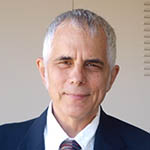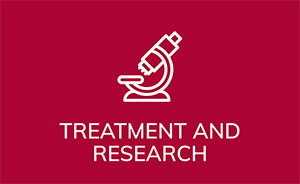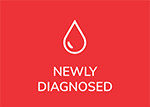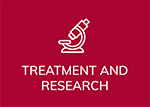
This is huge. This is game changing. This was one of the six late-breaking abstracts from ASH (American Society of Hematology) 2018 Annual Meeting and Congress that were selected because they reflect the most important, latest research in hematology and change how we manage heme malignancies.
Dr. Tait Shanafelt of Stanford, CA has two major areas of research: physician wellness and CLL. We asked about the latter, specifically his paradigm shifting findings for CLL patients that were presented in the last dramatic minutes of ASH 2018.
Dr. Shanafelt was the lead author of the ECOG trial comparing fludarabine, cyclophosphamide and rituximab (FCR) with Ibrutinib/Rituximab in treatment naïve CLL patients younger than 70.
Takeaways:
- This was a large Phase III trial comparing the combination of ibrutinib and rituximab (I+R) with the best chemo-immunotherapy, the “gold standard” FCR (fludarabine, cyclophosphamide, and rituximab) for young fit patients without del 17p or TP53 mutations.
- 529 patients were enrolled with 2/3 getting I+R.
- After only 33 months, it became clear that I+ R reduces disease progression risk (progression free survival or PFS) compared to FCR by about 2/3, and also significantly improved overall survival.
- The most common cause of death with FCR was CLL progression, not side effects.
- For even the small subgroup of mutated patients with good prognostic markers that tend to do best with FCR, there was a trend to improved PFS with I+R.
- The patients treated with I+R also showed a trend towards fewer adverse events, compared to the FCR cohort.
Conclusions:
It’s early and FCR has very durable data and others will disagree with me, but here are my thoughts about what this and the Alliance trial means for us CLL patients.
It is hard to imagine why anyone would choose FCR as their initial therapy for CLL. Perhaps if you are mutated with good markers, you can hope that you will be part of the 50-60% that do well long term and not part of the small percent that develop secondary cancers, particularly the hard to treat MDS (myelodysplastic syndromes). Perhaps you want “six months and done” of therapy.
This trial, in combination with the Alliance trial where I was also able to video interview the lead investigator Dr. Woyach, proved ibrutinib based therapy was superior to another “gold standard,” this one for older patients, namely BR (bendamustine and rituximab) in those over 65, seem to combine for a near one-two knockout punch for chemo-immunotherapy in chronic lymphocytic leukemia.
It also shows the power of collaborative multi-center sites to get strong data and definitively answer important questions.
As I promised the doctors in the interview, I have included a link to the new Alliance trial that it is enrolling now: Ibrutinib and Obinutuzumab With or Without Venetoclax in Treating Older Patients With Untreated Chronic Lymphocytic Leukemia.
Here is the link to the new ECOG trial: Ibrutinib and Obinutuzumab With or Without Venetoclax in Treating Patients With Chronic Lymphocytic Leukemia.
They both make a lot of sense to me for appropriate patients to consider.
Here is the late breaking ECOG abstract, possibly the most anticipated talk at ASH 2018.
Here is my interview with its lead investigator, Dr. Tait Shanafelt:
Our options just keep getting better.
Stay strong.
We are all in this together.
Brian Koffman
Dr. Brian Koffman, a well-known doctor, educator, and clinical professor turned patient has dedicated himself to teaching and helping the CLL community since his diagnosis in 2005. He serves as the Executive Vice President and Chief Medical Officer of the CLL Society Inc.

















